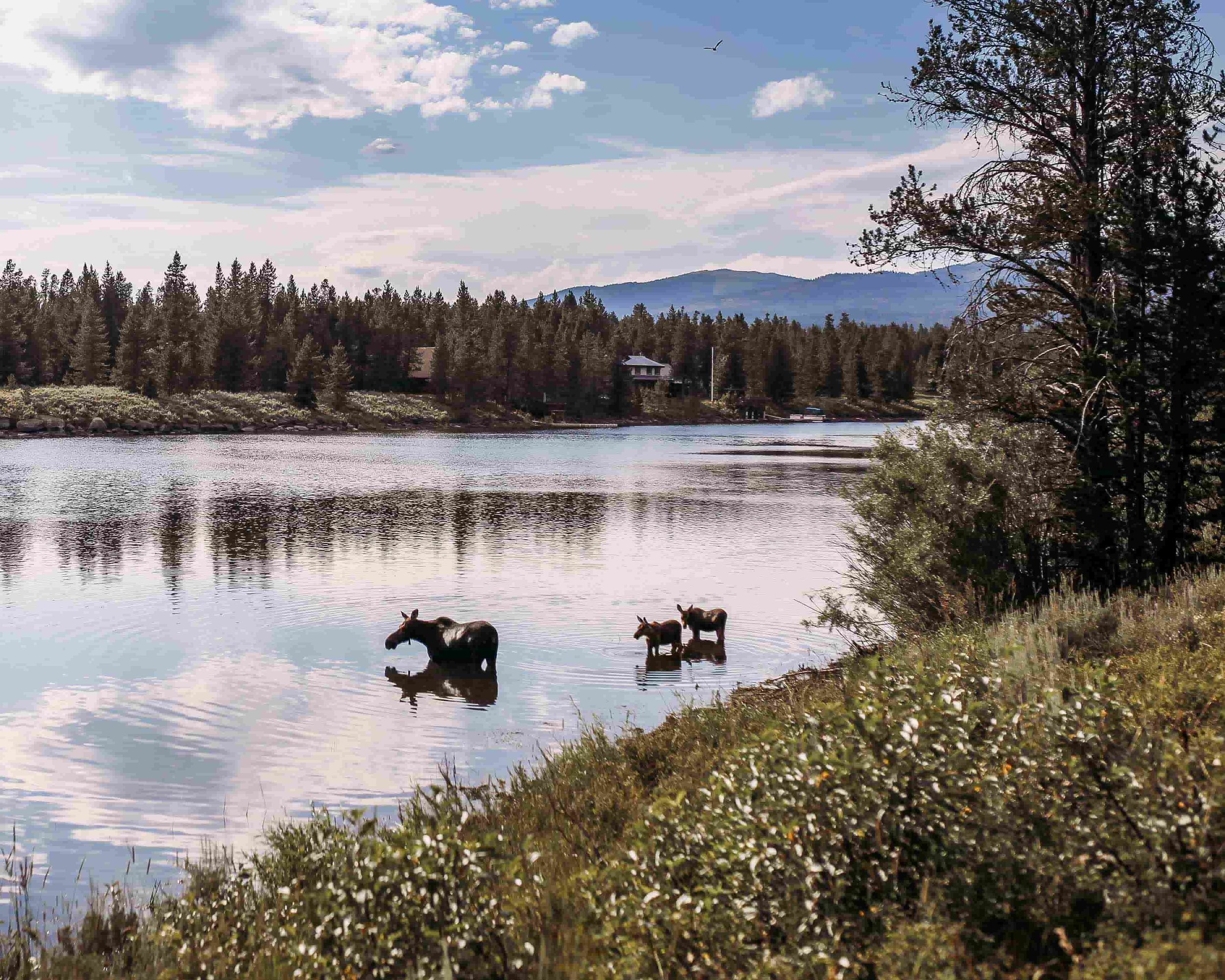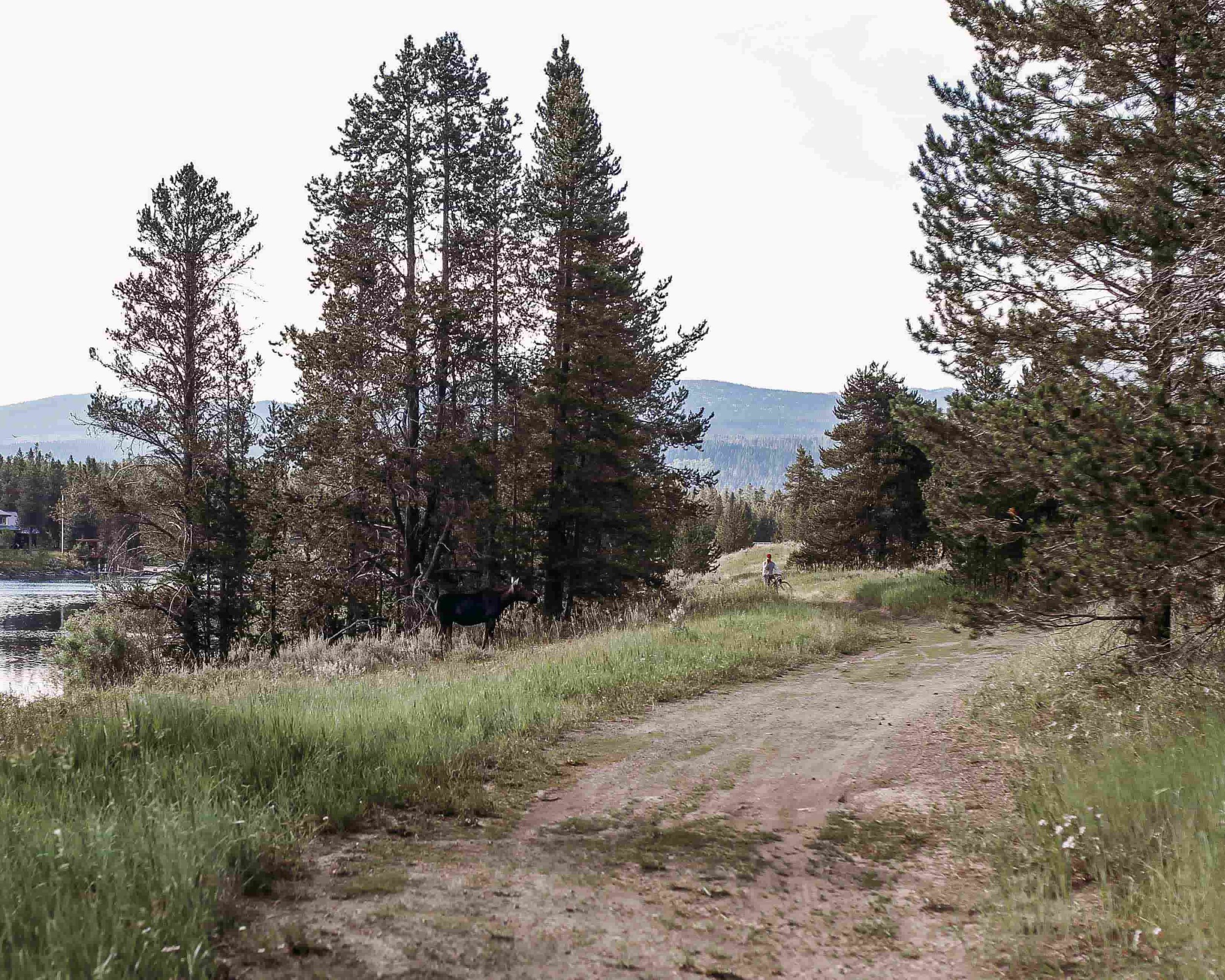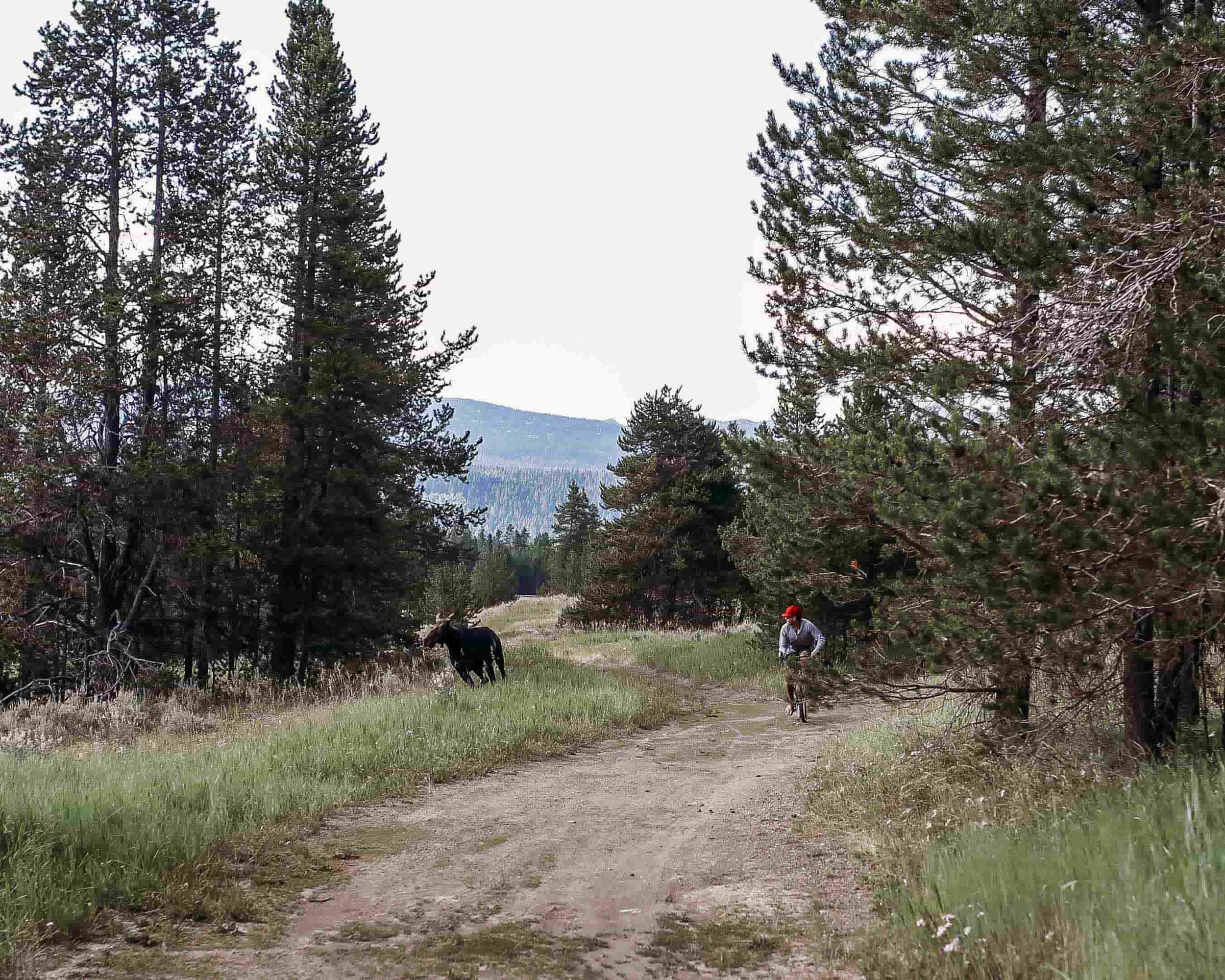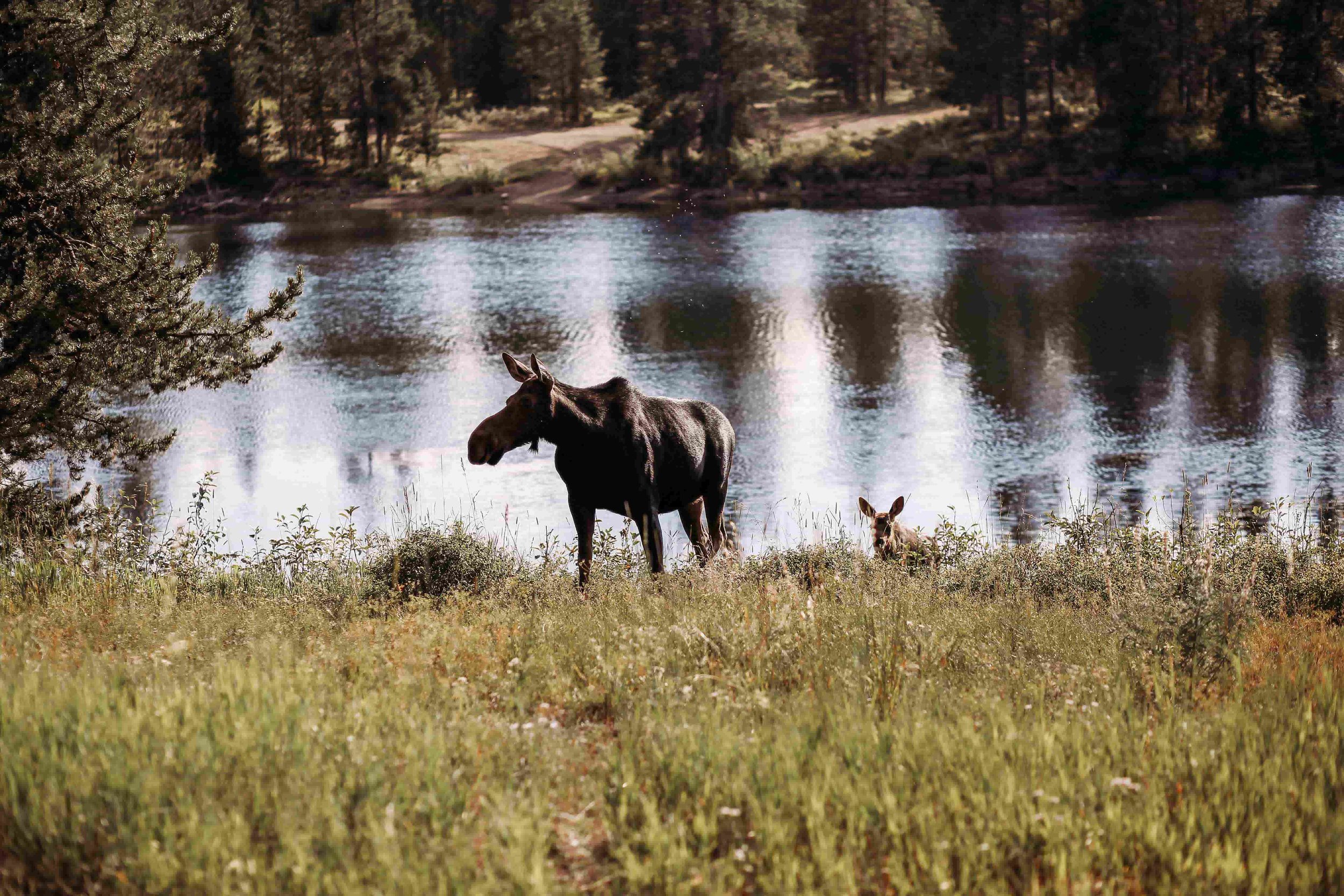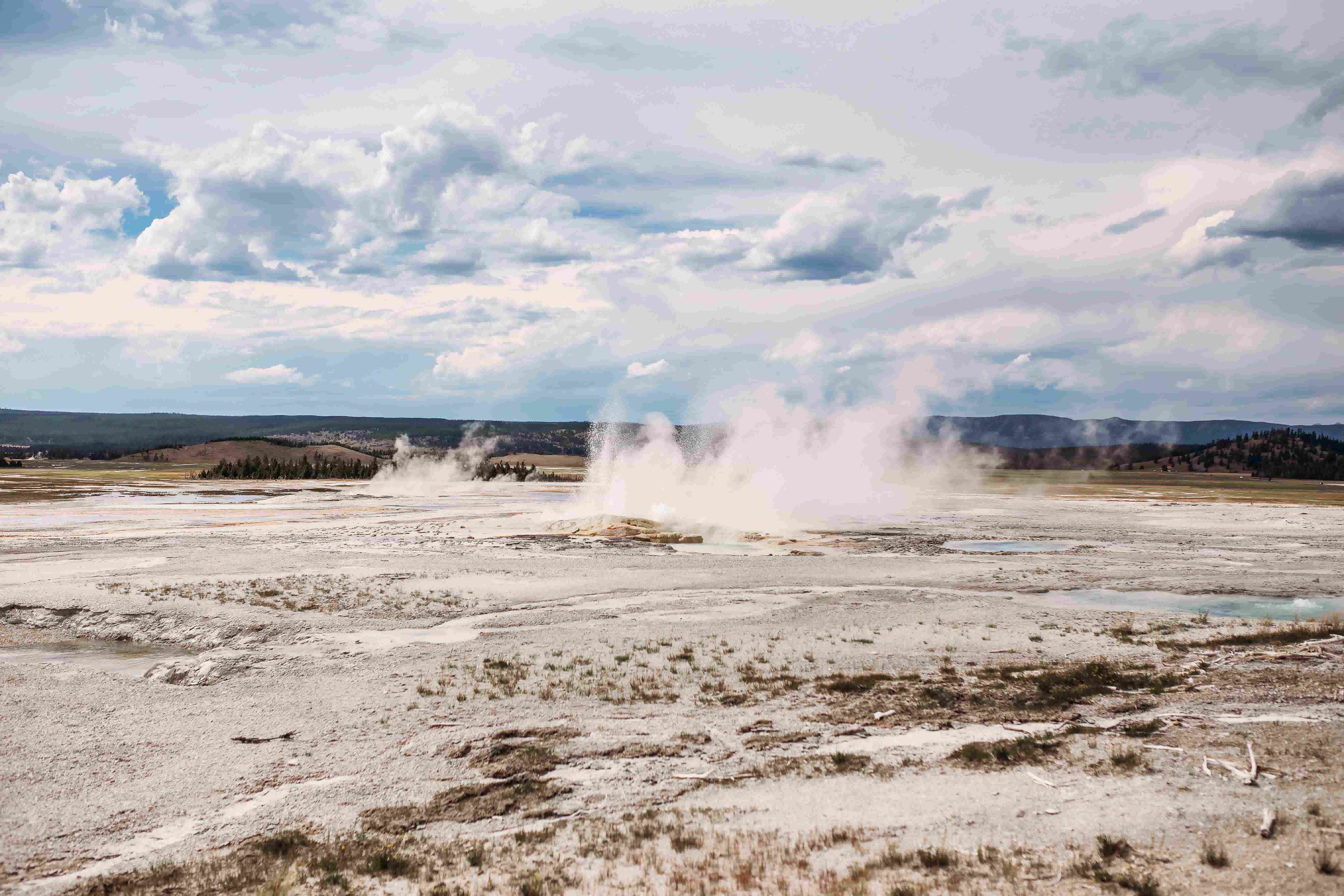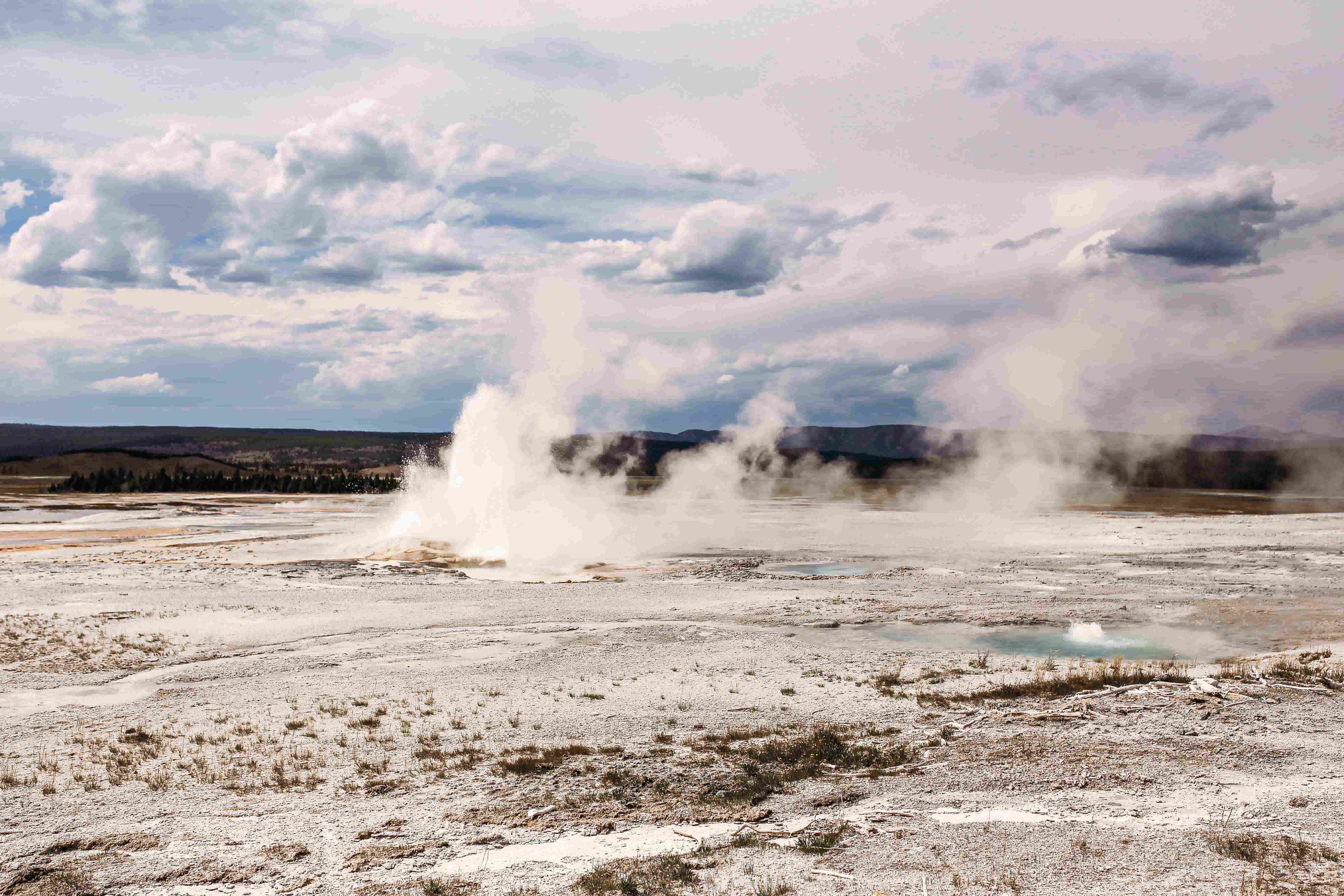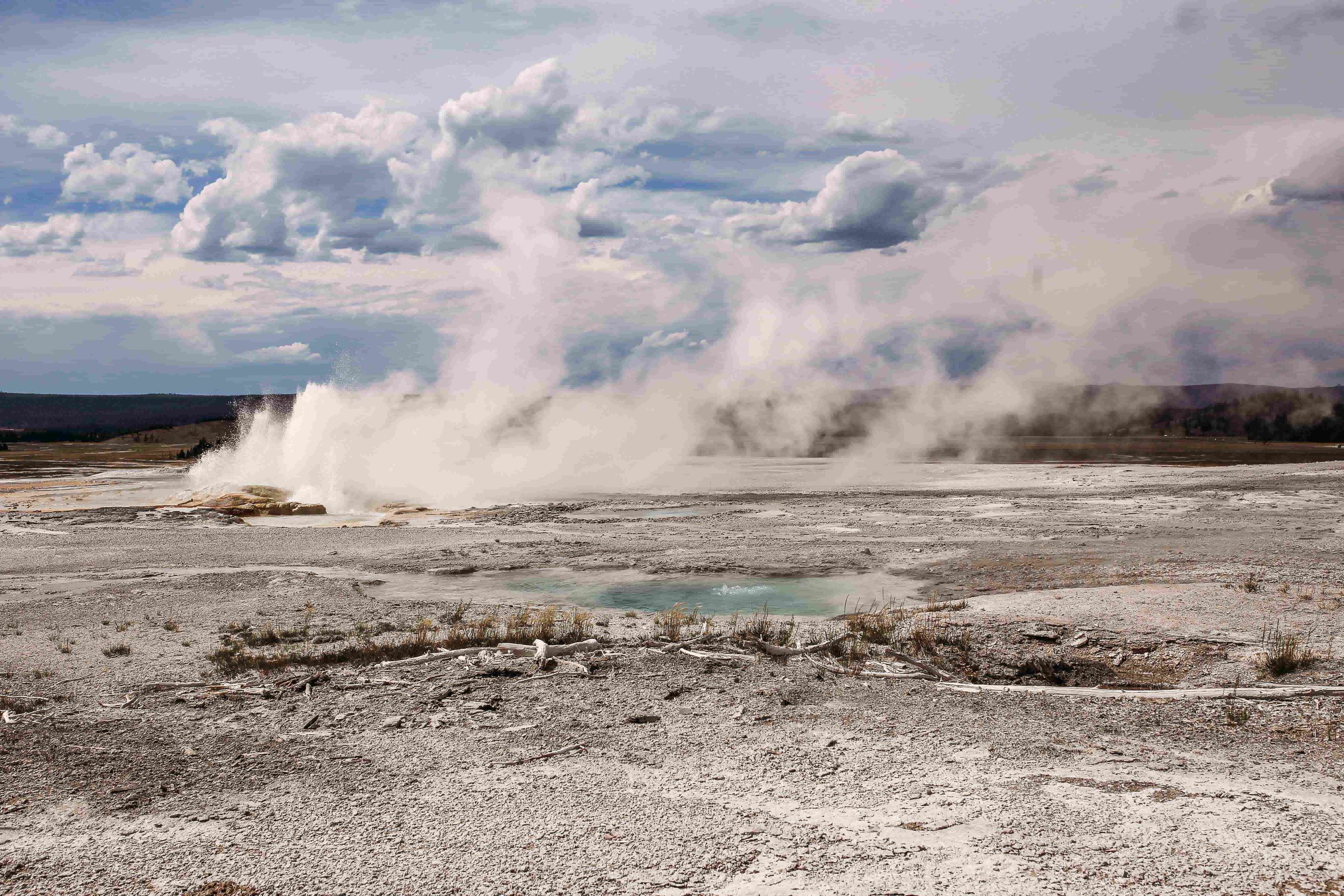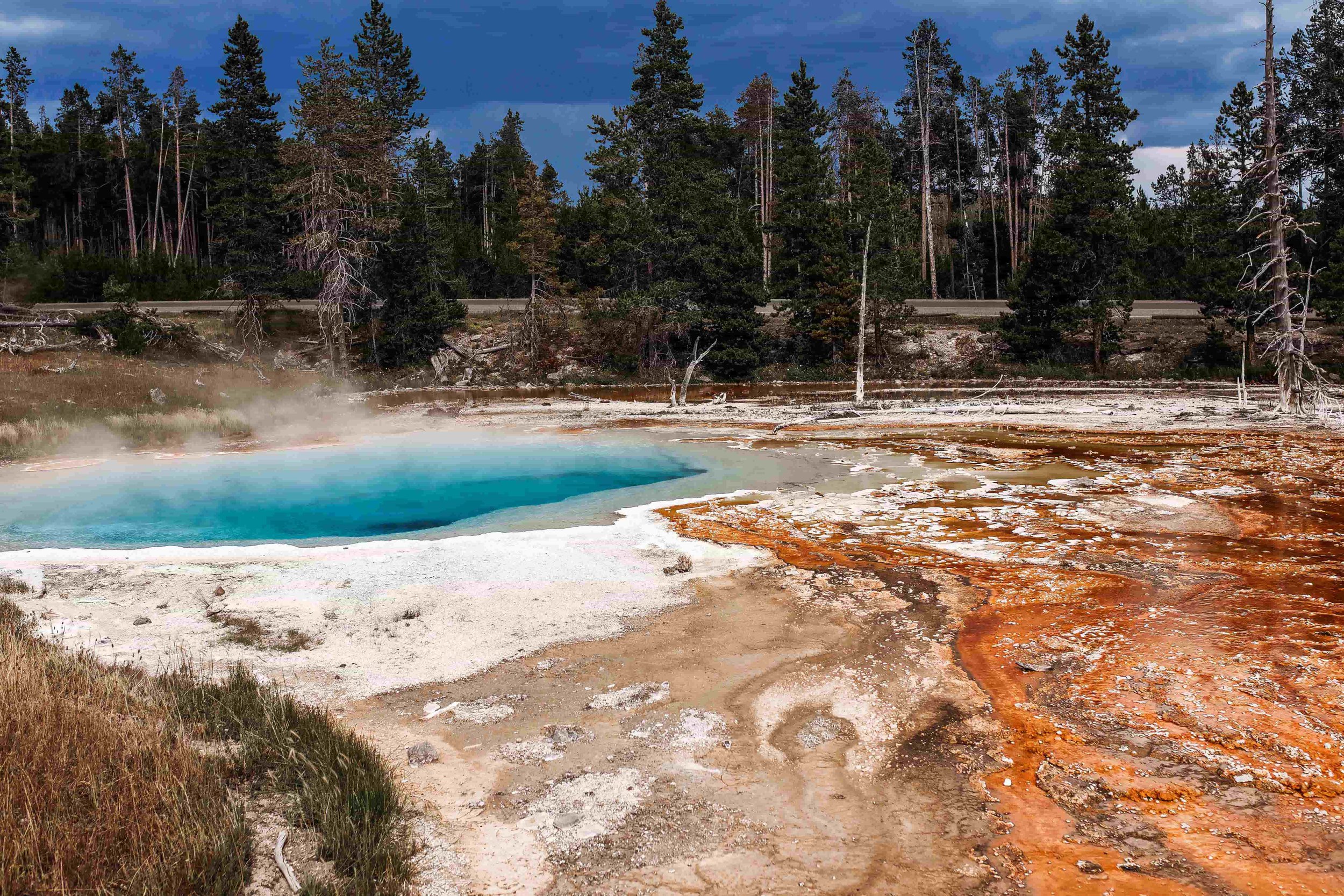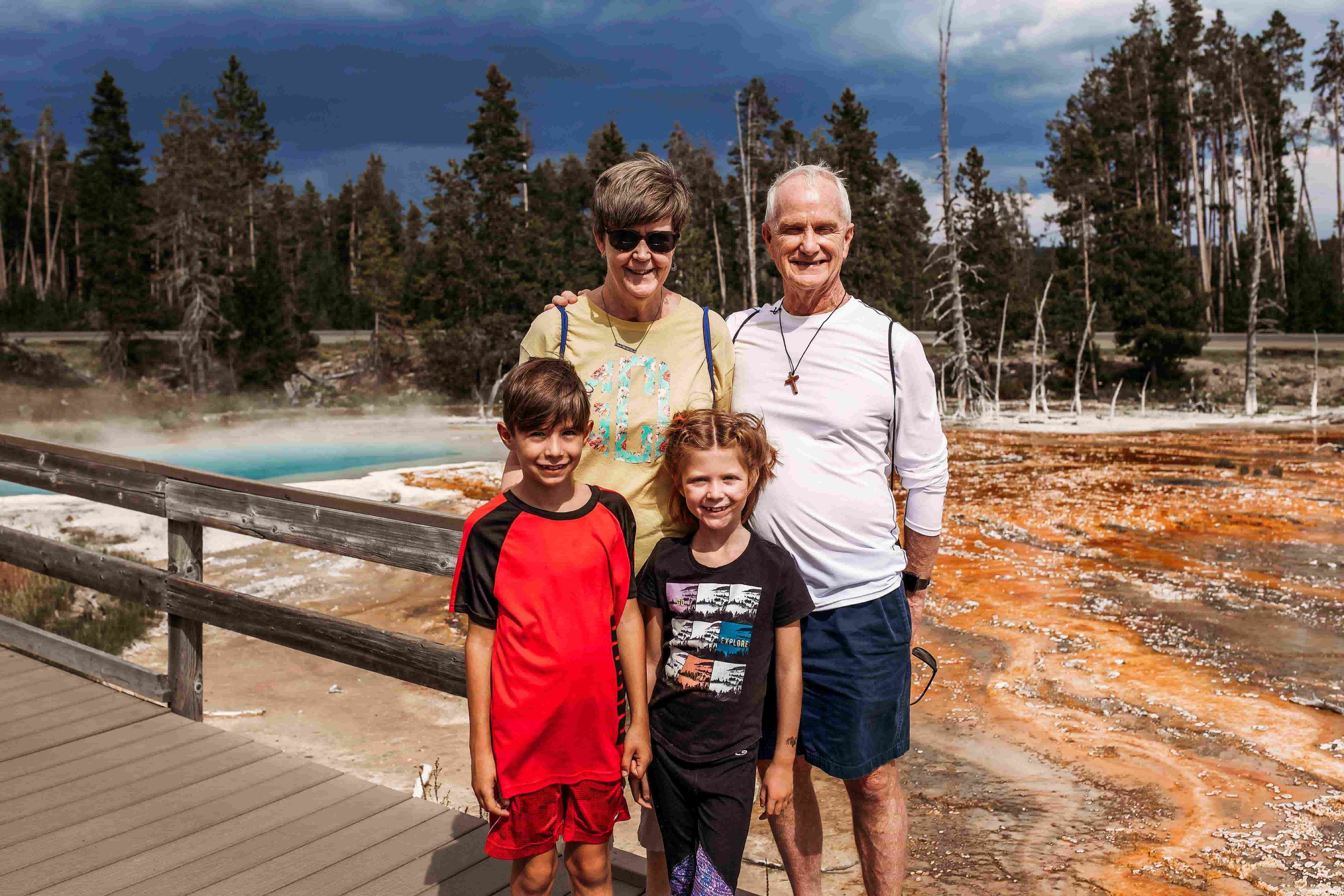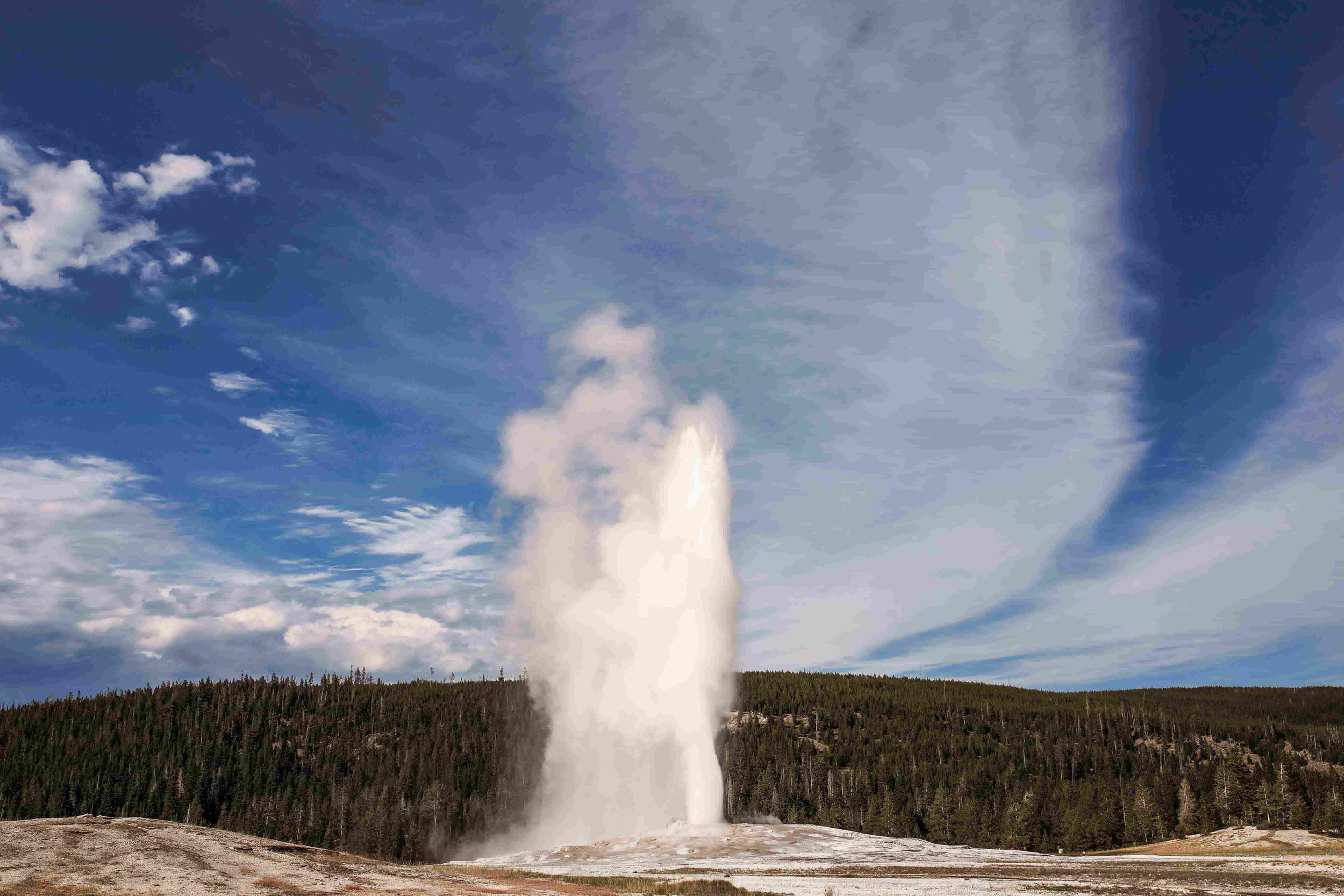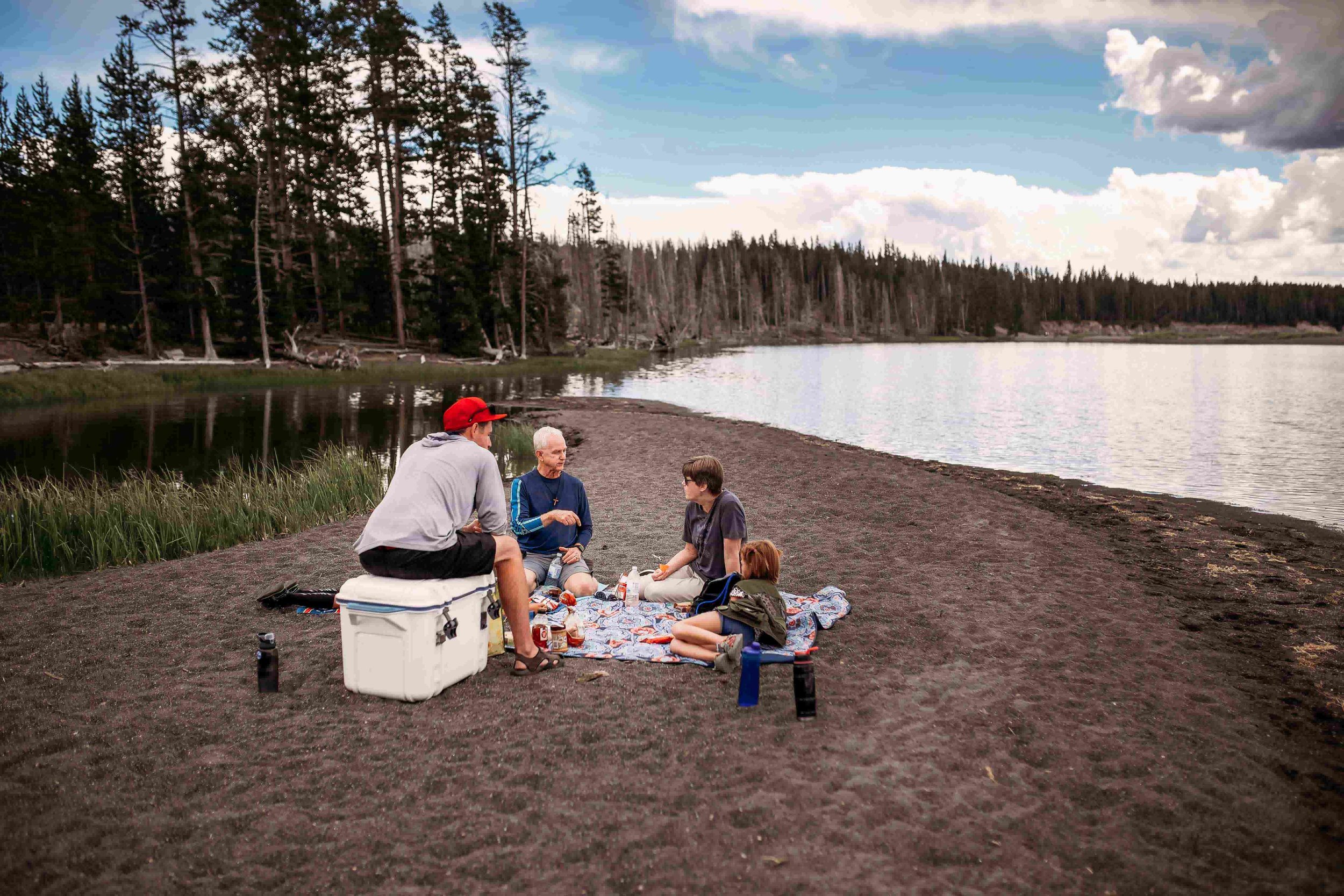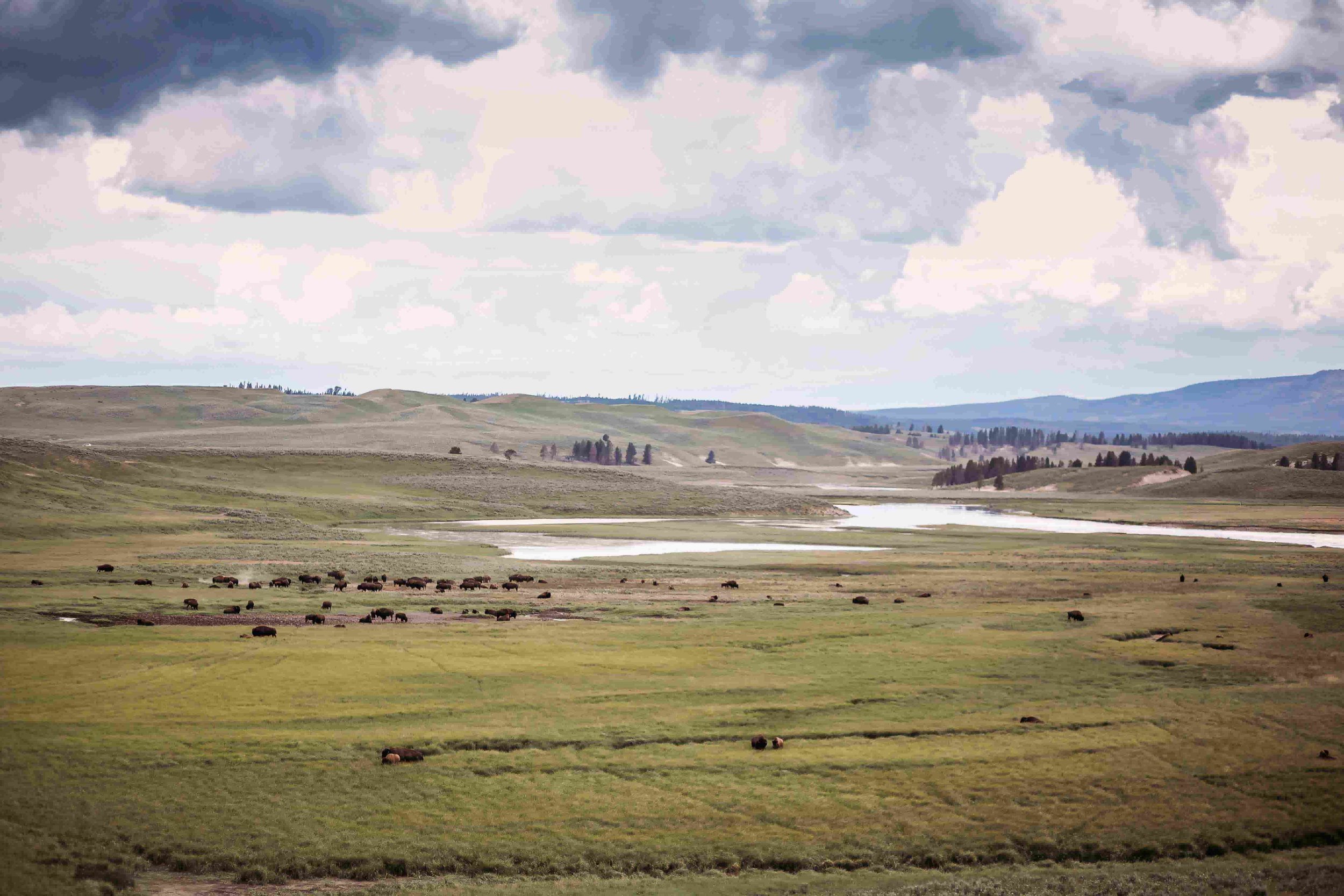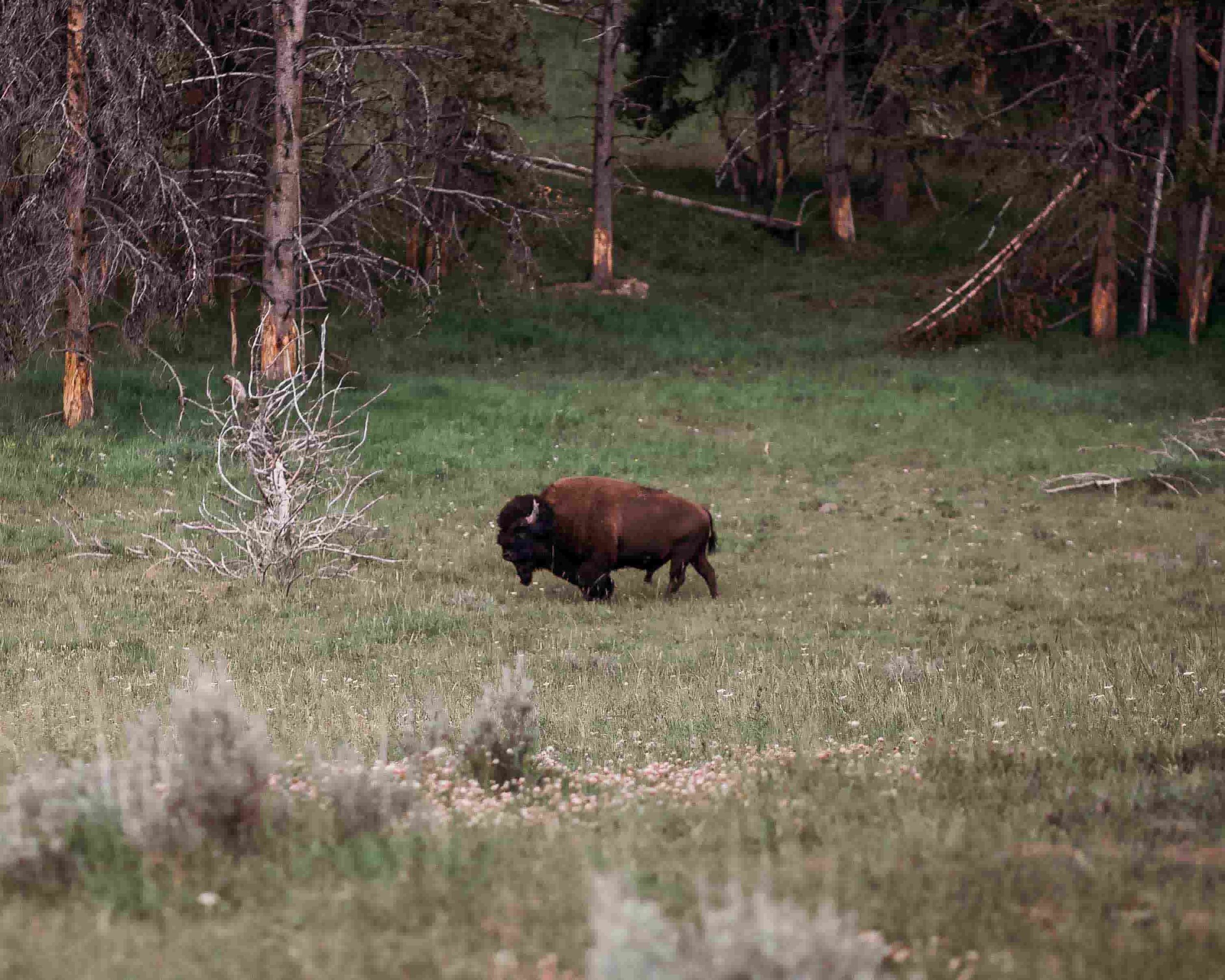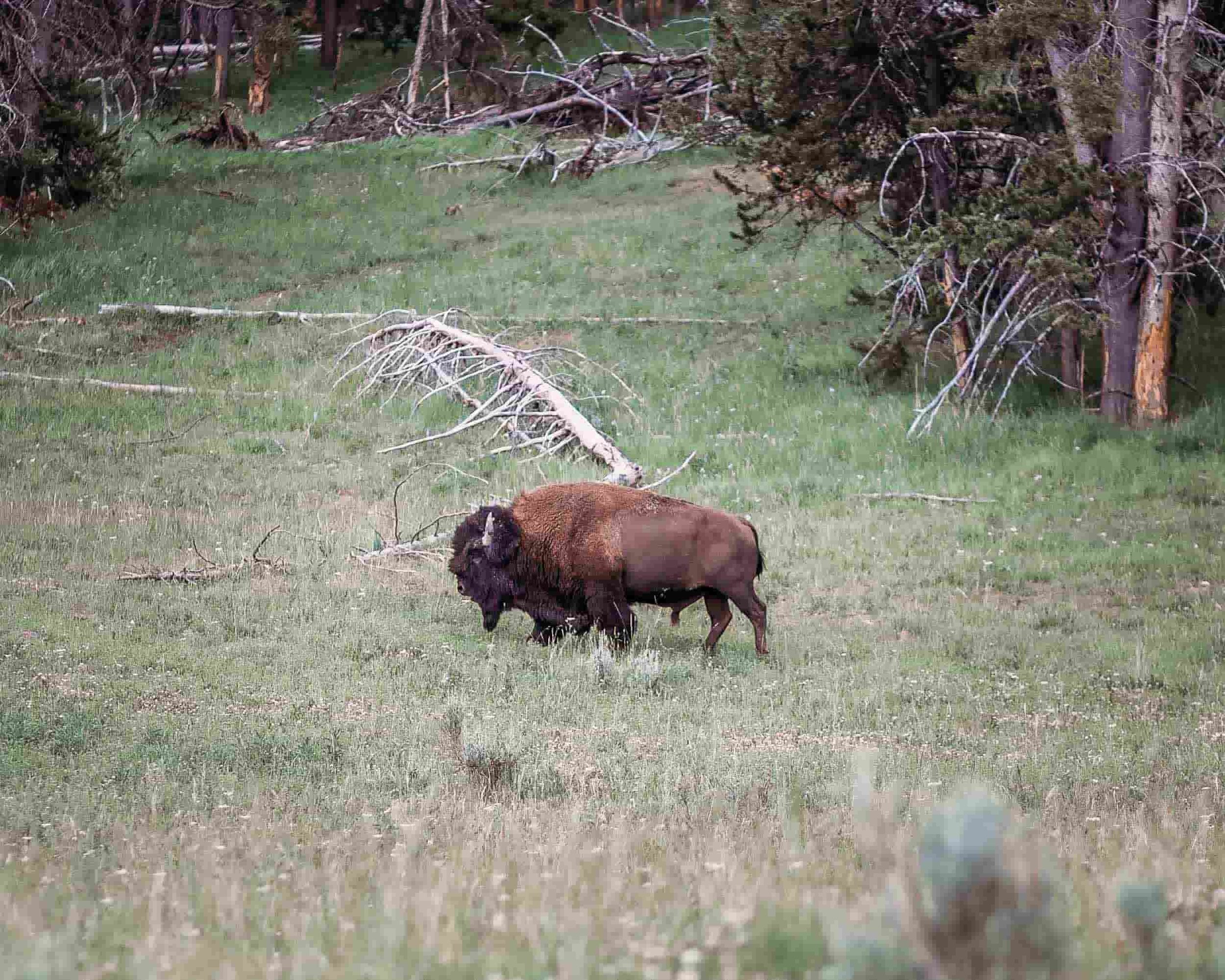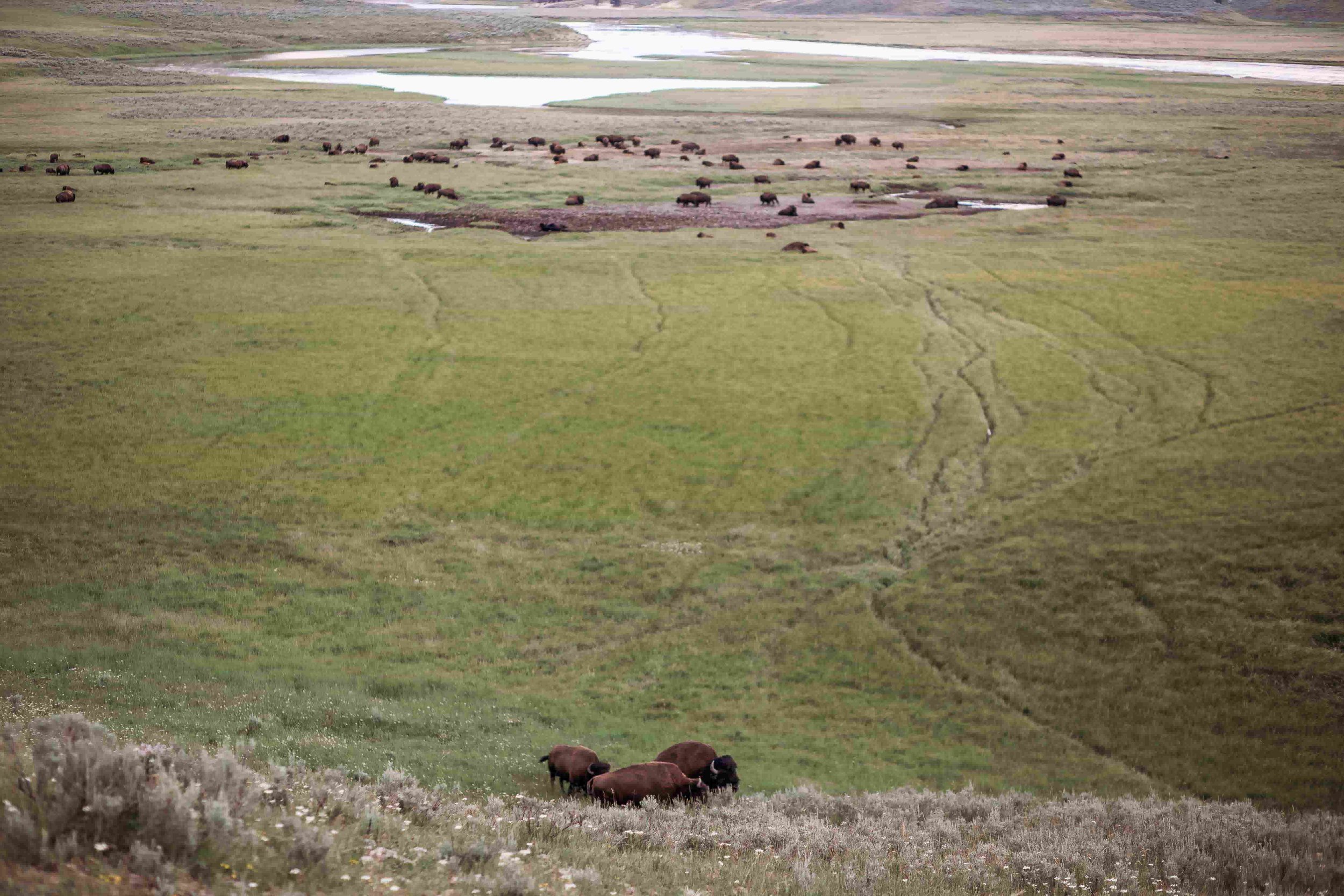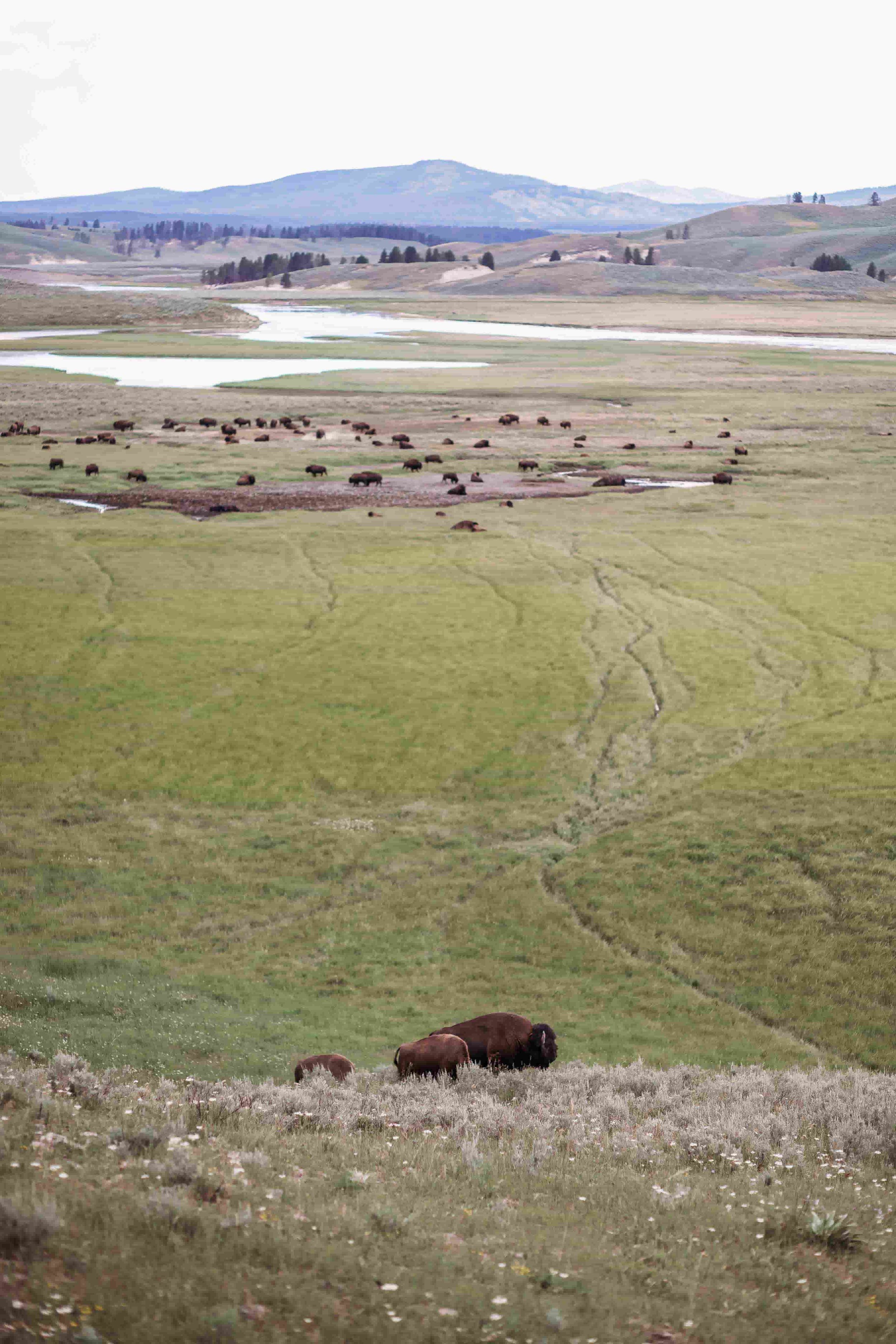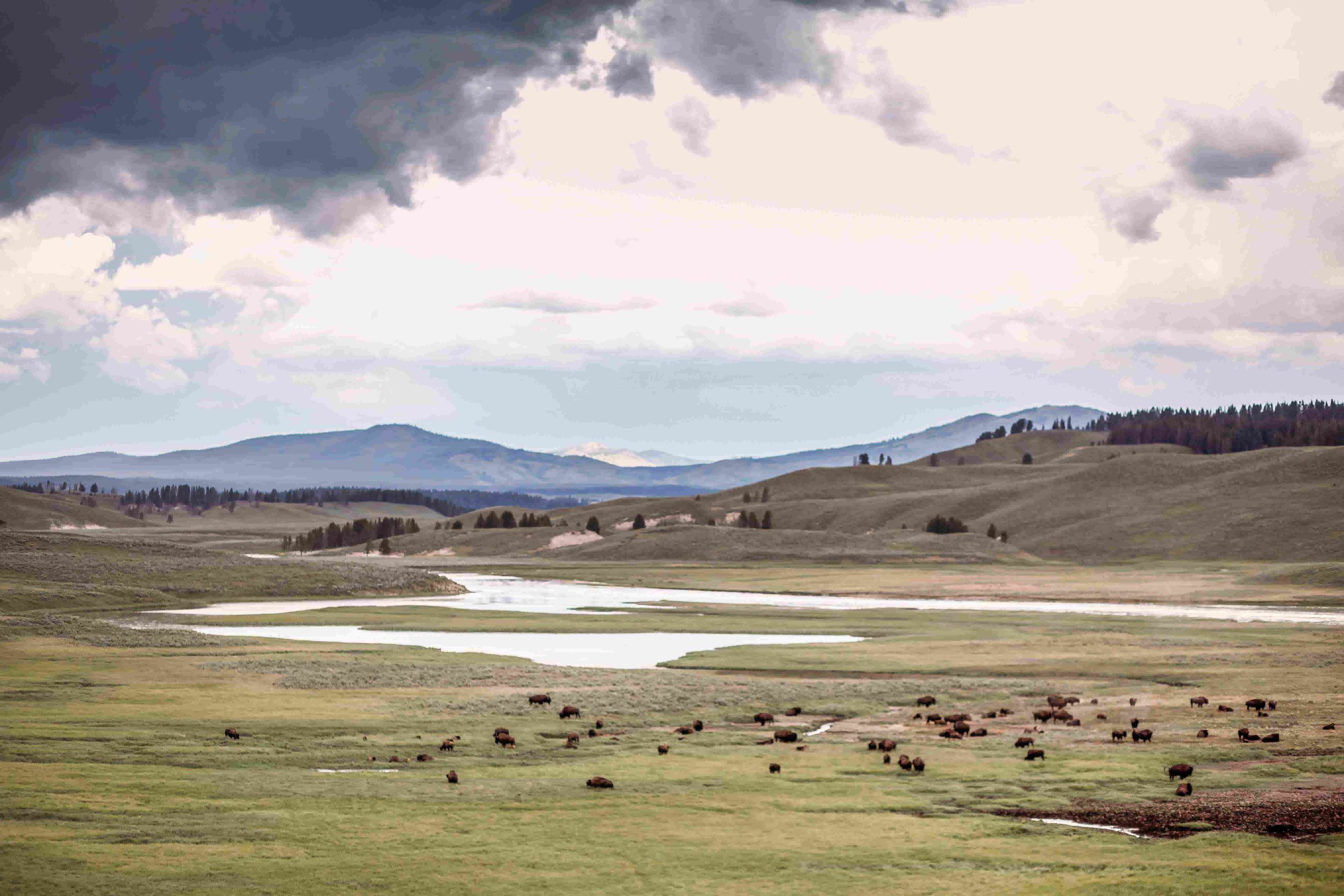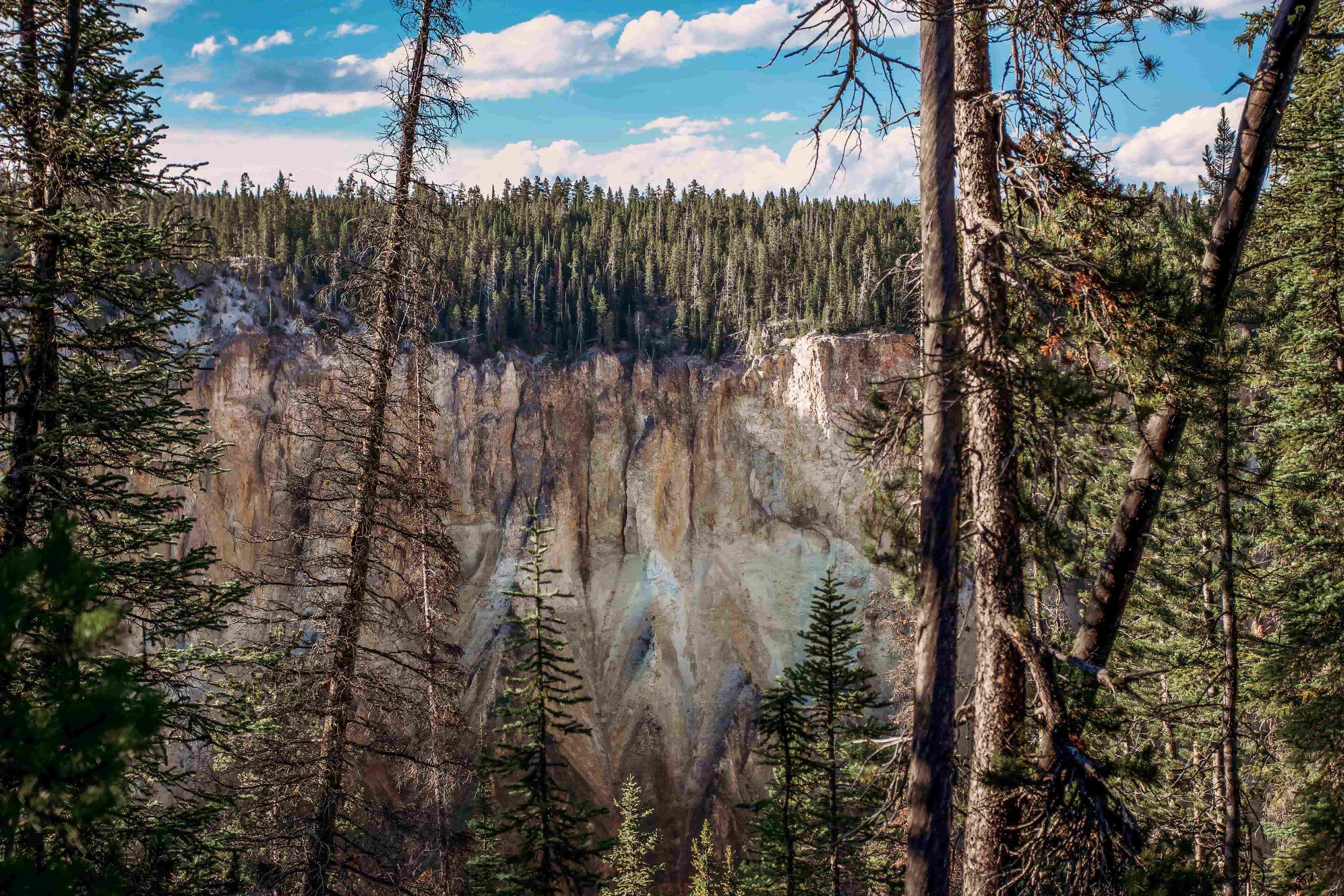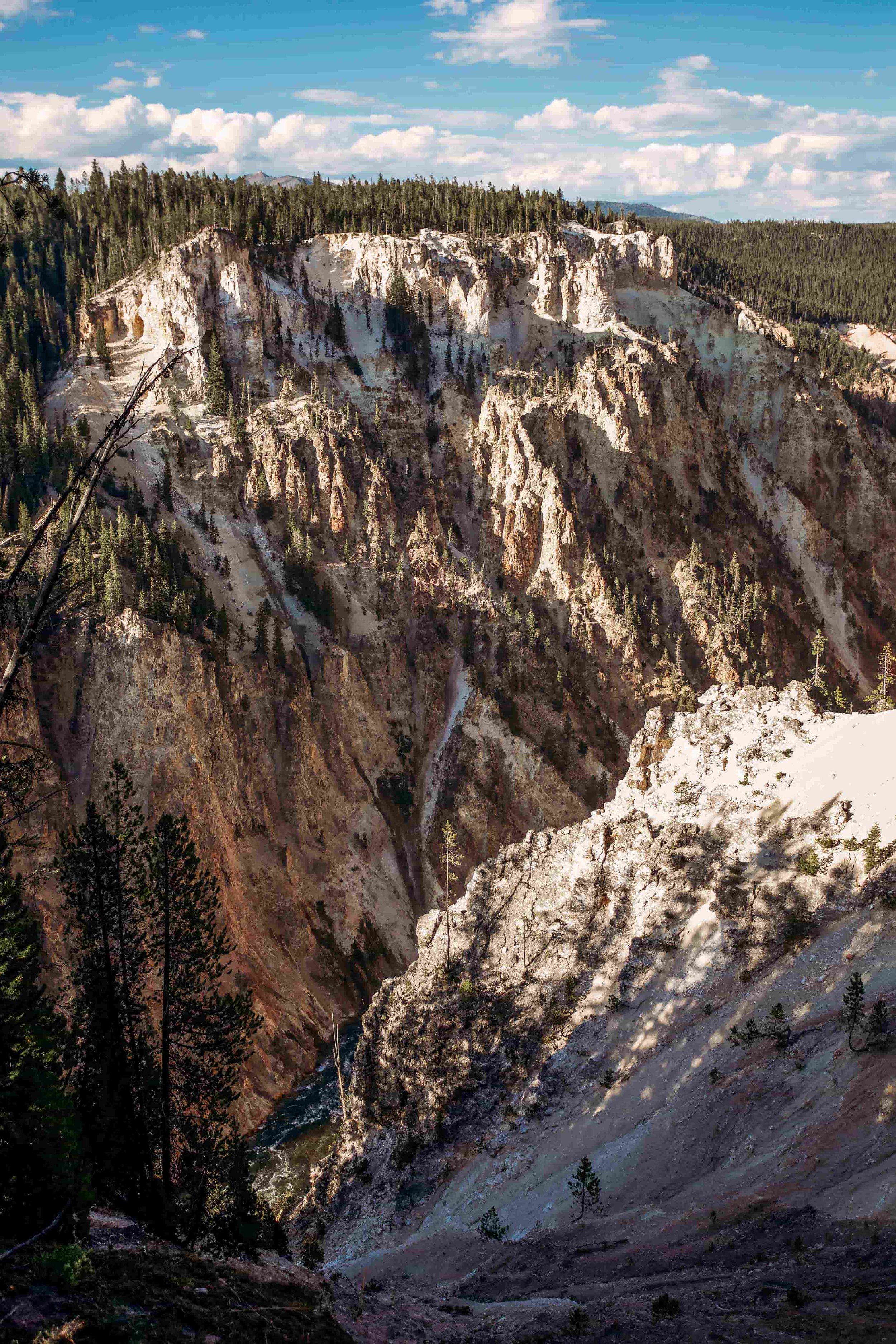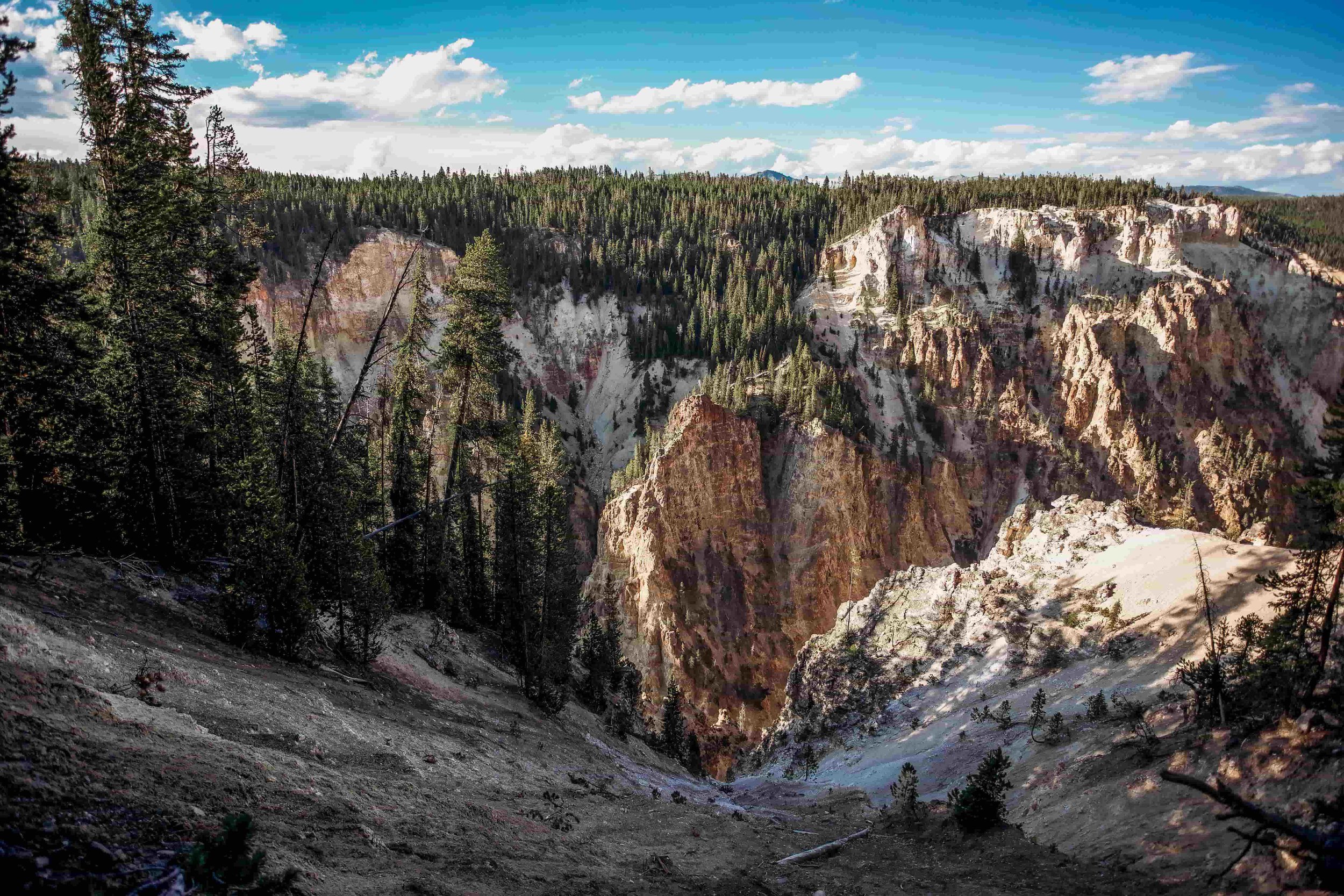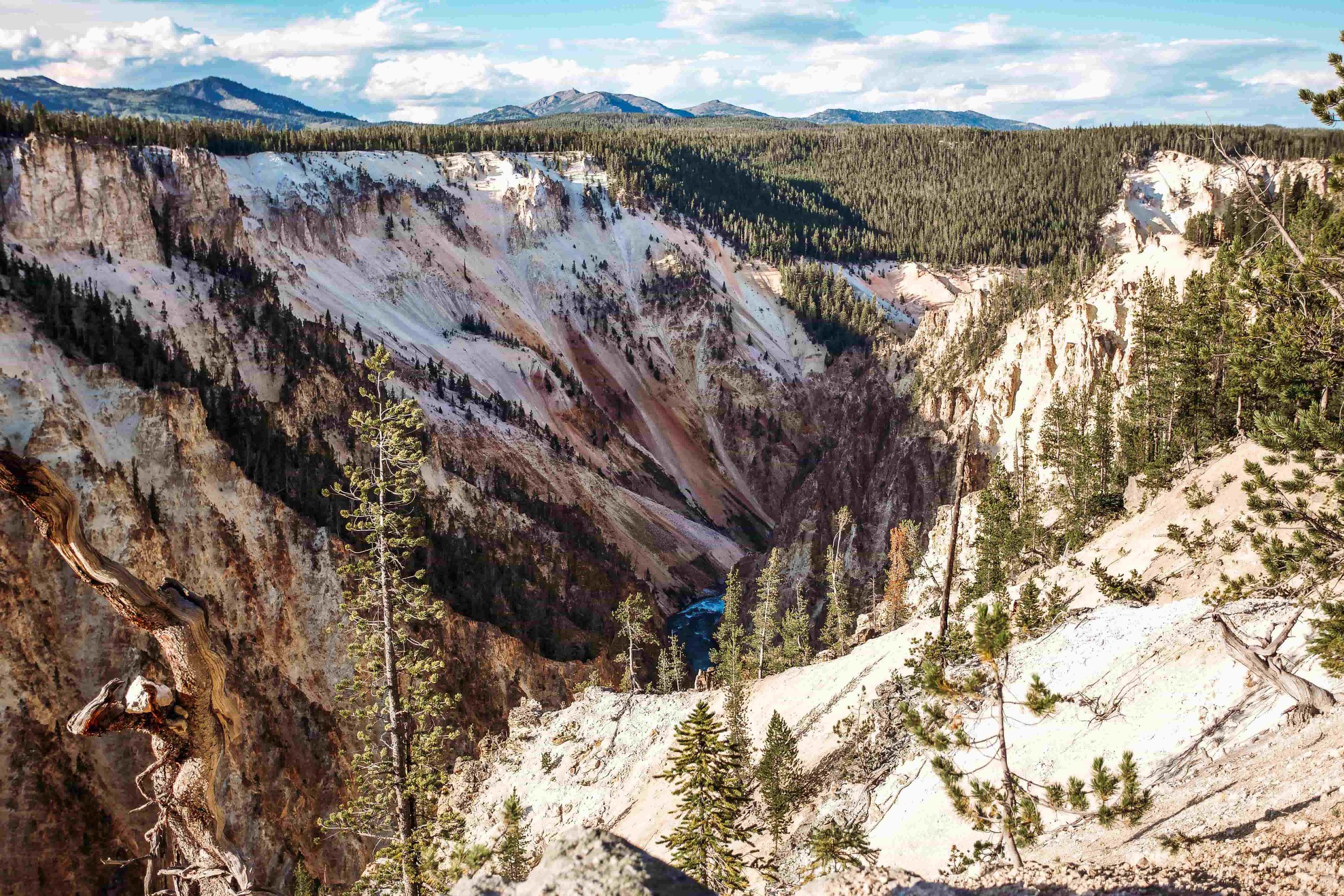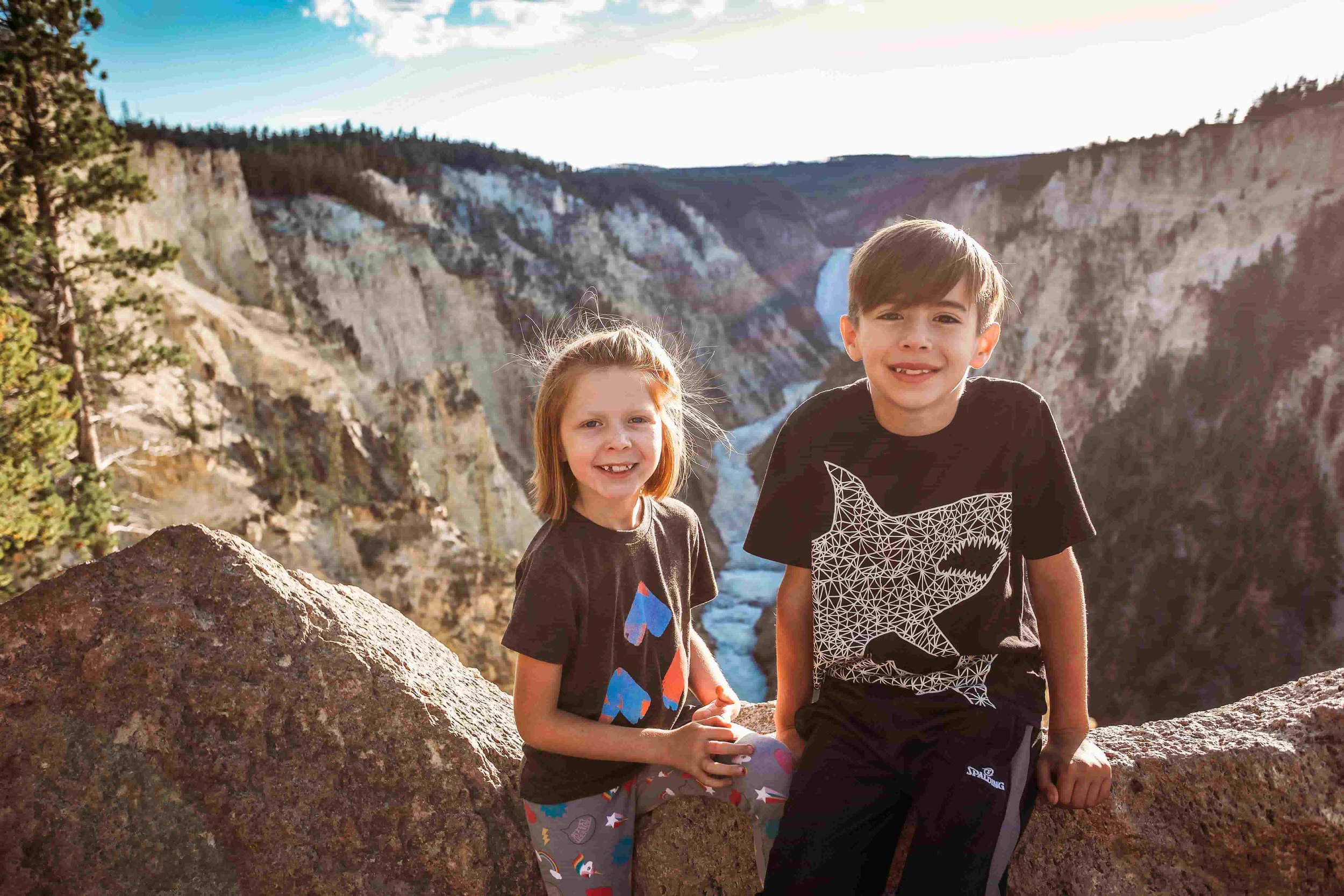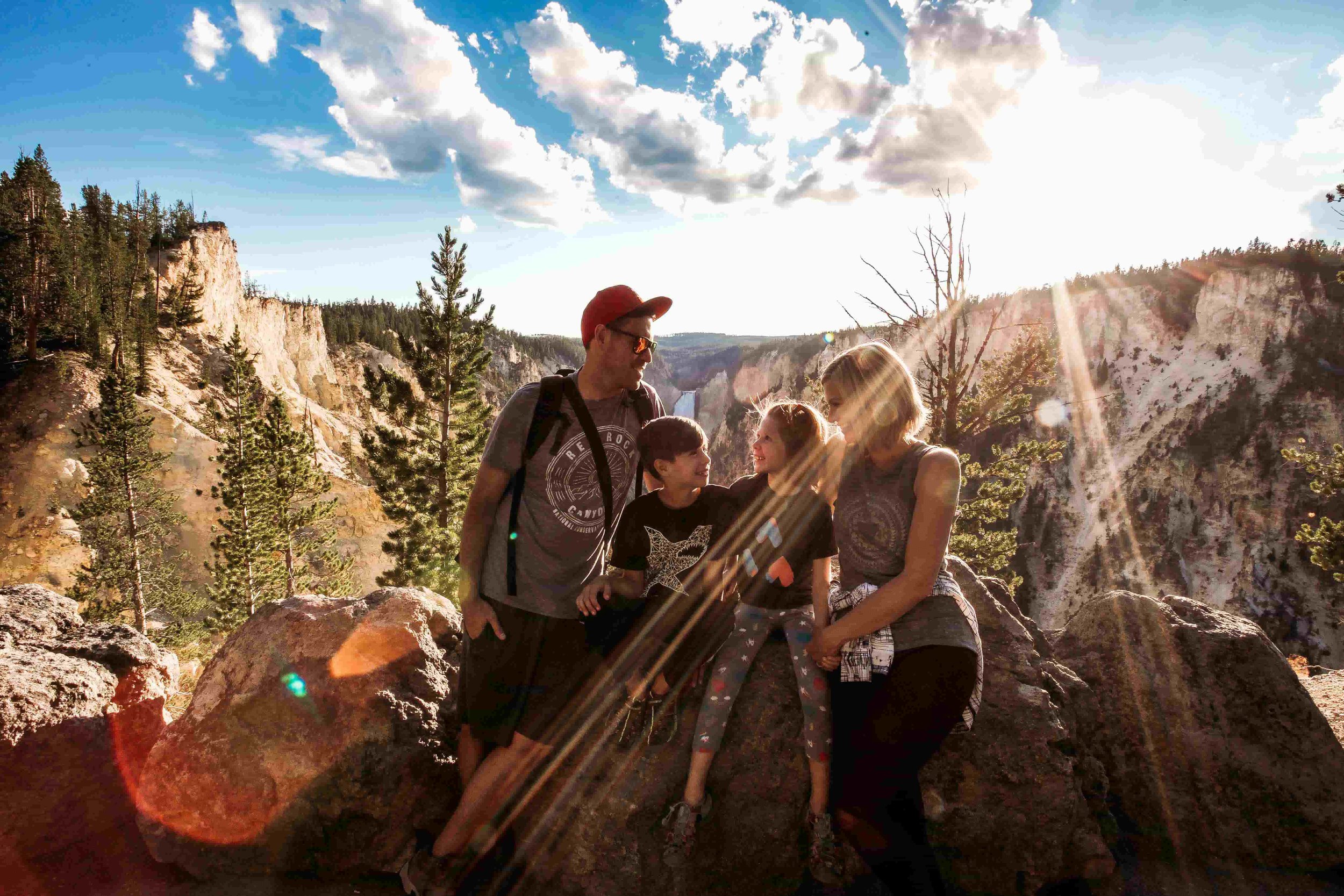Yellowstone National Park (boondocking)
Yellowstone National Park is one of the most popular national parks, and with good reason. The amount of wildlife and thermal features make it super unique, and people come from all over the world to see it. It was the very first US national park, and covers 2.2 million acres in Wyoming, Montana and Idaho. Last year 4.1 million people visited Yellowstone!
We visited in August of 2019, and wanted to share our experience at this amazing place, for people who may want to plan a trip in the future or simply read about our time there!
Where to stay:
Many people book their Yellowstone trips a year in advance, as hotels and RV parks fill up quickly. There are several first come first served campgrounds in the park, but most of the park doesn’t have cell signal, and we have to work on the road, so we didn’t want to stay in the park. My parents were flying in from Atlanta, so we needed to find a place for them that was close to a campground or boondocking spot for us, and we found that in Island Park, Idaho.
They got a little cabin through Airbnb and we stayed at McCrea Bridge Campground. We didn’t have any hookups, but it was fine as we took some showers at my parent’s cabin and did laundry there. We were about 30 min. outside of West Yellowstone, which didn’t seem to be that far when we booked, but because of how big the park is and how much driving you have to do IN the park, we wished we could’ve found something closer!
We loved our campground despite the distance from the park. We saw a mama moose with her two babies the first day we were there! The campground is part of the Caribou Targhee National Forest and is located on the backwaters of beautiful Island Park Reservoir in Island Park, Idaho at an elevation of 6,200 feet. There is world-class fishing, beautiful scenery and wildlife.
If you’re able to stay in the park, that’s your best bet for cutting down driving time. Just outside the west entrance is West Yellowstone, MT. It’s a cute little town with lots of highly rated restaurants and little shops, and basically everything is within walking distance. It’s a very lively place, always busy with people walking around, but didn’t feel overcrowded. Lots of people stay here, as it’s convenient and lively, but it is pretty touristy.
At one point we drove through Gardiner, Montana which is where the park’s north entrance is. This is the only entrance open year round. Gardiner is a really quaint little town on the water and is a beautiful area as far as landscape. We found that the west entrance is the busiest and most popular, since the big touristy landmarks are most easily accessible from that entrance, but we found the north entrance to be wayyy prettier and felt more like a national park. Next time we go, we will try and find a place to stay on the north side.
What do to:
Our first day in the park, we entered through the West entrance and stopped in the West Yellowstone Visitor Information Center. It’s right outside the park entrance and a lot less busy than the ones inside the park. It’s not huge, but it was a good place for a quick stop to get the kids Jr. Ranger booklets. They charge $3 over book, which is a first for us, as all the other books we’ve gotten have been free at other national parks.
When you enter the park, you’ll get a park map and you see that the main roads are in the shape of a figure 8. The first part of our trip we explored the lower section of the 8.
Our first stop in the park was Lower Geyser Basin. This area of thermal features is spread out over an area 5 x 2 miles on both sides of the Firehole River. There’s a boardwalk that takes you around the many features and it’s a really cool and unique place to stop and check out! Beware though- it’s a stinky site because of the hydrogen sulfide gas given off by the geysers. Sulfur and its compounds are notorious for their stinky odor. Peee-ewww!
The next stop along the route is Midway Geyser Basin, home to the stunning Grand Prismatic Hot Spring, which is the most photographed thermal feature in Yellowstone. Midway hosts two of the largest thermal features of their types found anywhere in the world. Grand Prismatic is a huge hot spring and Excelsior Geyser is one of the largest geysers. You have two choices of ways to view them. The main parking lot, which you come to first, takes you to a lollipop shaped boardwalk that surrounds the 2 features. Each time we passed it, the parking lot was full with a line of people waiting to get in.
We opted to drive past the main lot and park in a less crowded lot that led to the Grand Prismatic Overlook Trail. We enjoyed this view of the feature, as it was higher up and you could really see the grandness of it! In my opinion, this is the most beautiful feature in the park and should be on top of your “must-see” list.
Hopping back in the car, the next stop down the road is Old Faithful, which is located right behind the Old Faithful Visitor Information Center. As soon as you walk up to the visitor center, you’ll start seeing signs with the time of the next eruption. Old Faithful erupts about 20 times a day, so if you arrive with some time to wait, you can check out the cool displays in the visitor center and watch some of the interesting movies about Yellowstone that continually play in the theater.
Old Faithful can vary in height from 100-180 feet with an average near 130-140 feet. This has been the historical range of its recorded height. Eruptions normally last between 1.5 to 5 minutes. Scientists estimate that the amount of water projected during an eruption ranges from 3,700 gallons to 8,400 gallons. During an eruption, the water temperature at the vent has been measured at 204°F. The steam temperature has been measured above 350°F! The Old Faithful crowd is busiest between 12-6PM.
The area around the Old Faithful Visitor Center is very busy. There is a large souvenir shop, a restaurant, lodge, post office, medical facility and gas/service station all in that area with multiple parking lots. There are other, smaller geysers and trails behind Old Faithful if you want to spend more time there.
These 3 stops may take up a full day, depending on how long you stay at each spot and how slow traffic/parking is. If you want to continue and see more, the next stop down the road that we visited is Yellowstone Lake.
*In between all of the stops, there are beautiful picnic spots to pull off at as well as great places to fish or play in the river if you need a break from the car or want to cool off!*
Yellowstone Lake was our next stop. The lake is 7,732 feet above sea level and covers 136 square miles with 110 miles of shoreline. The average temp. Of the lake is 42 degrees, so it’s not one you’d want to take a swim in! We enjoyed the scenic drive around the lake and stopped for a picnic on a piece of shore by a pull off.
After passing the lake, we entered Hayden Valley. This is a picturesque valley filled with bison! We saw a few close up and many far below. Some people even set out chairs to sit and admire the view for a while! This is not the valley that the bison are known for blocking the road often, so you can just pull over here and admire them without much stalled traffic.
Our next stop along the south loop of the “8” was to see the Grand Canyon of the Yellowstone! We hiked the Canyon South Rim to Artist Point. It’s. 2.5 mile out and back, relatively easy hike and I highly recommend it! It follows the canyon and the views are stunning the entire way! When you get to Artist Point, you have to walk alongside the parking lot and then there is a little walkway to one of Yellowstone’s most iconic spots. The views of the falls are amazing! This area was extremely crowded when we were there, but definitely a must-see. If you choose to drive to the parking lot and see it without hiking, its’ just a short .02 mi walk.
This completes the list of things we saw and did along the south loop. We split these activities up over several days. Always plan for driving to take longer than expected, as wildlife sightings can cause people to just stop in the road and gawk, even with tons of cars piling up behind them!
For the top half of the 8 loop, we entered through the north entrance. We had spent the night in Bozeman, MT while we were visiting my sister up there, so coming back through the north entrance just made sense. Our first stop was the Albright Visitor Center. The kids had completed their Jr. Ranger books, so they turned them in and got sworn in as Jr. Rangers! All around the visitor center elk were grazing and laying around. It was very busy with people, and they didn’t see to mind at all!
The Mammoth Hot Springs area is very close to the visitor center. It was very crowded when we were there. There are several parking lots to see different parts, but you can take the boardwalks around and up and down to see everything. There were some cool formations, but in my opinion, it wasn’t quite as special as the other thermal feature we’d seen.
It was extremely hot the day we were there (around 90- in Aug) so I opted to sit in the shade while everyone else explored the area more. Sounds terrible, I know, but I hate the heat and I wanted to save my energy for hiking at a better location later! I wouldn’t recommend skipping it, as I think most people would really enjoy it. There are multiple hikes that depart from Mammoth, so you may want to look into those to see if any of them interest you.
After checking out Mammoth, we continued driving around the north area of the park. (The top of the figure 8). I had talked to the ranger and asked for a scenic hike recommendation that was located in between Mammoth and Lamar Valley, which were the 2 northern destinations we wanted to see. He recommended Yellowstone River Picnic Loop Trail. We found it on the map (you will use the map a lot since you won’t have cell service in most areas of the park) and headed that way.
We found the parking lot to be rather empty, and the trail wasn’t marked. There is a little bathroom building with a trail to the right and one on the left of it. Both take you where you need to go, but the one to the left is less steep.
The trail is a loop, but we read that the second part of the hike loops back by the road, so we chose to turn around and hike back along the beautiful canyon. We turned around at the halfway point, which was when you get to the top of a hill where you have beautiful 360 degree views.
The craziest/coolest thing about this hike was seeing a gigantic bison parked in the middle of the trail, refusing to move! We had to take a detour around him, keeping a safe distance. He stood up when we got too close, which was intimidating, so we moved further away to give him space!
We also saw pronghorn, a badger and a snake on this hike! The views were spectacular the whole way and I’d recommend this hike to anyone!
After we finished the hike, we hopped back in the car to continue down the road a bit because I really wanted to see Lamar Valley. I had heard that in Lamar Valley, the bison come right up to the cars and are frequently in the road! It proved to be true! It was really cool to see the giant bison overtaking the road, with the babies following at times. They were so close which was slightly intimidating but really cool!
Hayden Valley was beautiful, but I highly recommend going out to Lamar Valley as well, so you can experience a bison traffic jam!
Check out a guide to hiking Yellowstone HERE.
When to go:
The best times to visit Yellowstone National Park are from April to May and between September and October. These months offer mild weather and fewer crowds. July and August are the most popular months to visit. I do wish we had gone a little later in the year to enjoy cooler temperatures. August was too hot for my taste! The evenings were nice and cool, thankfully!
We found that either going to the park really early or mid afternoon was best for less lines at the gate. One day we went in around 10:30 am and had a long wait. Everything was more crowded then. We like to sleep in, so we found arriving around 2PM was a great time. We stayed until dusk and got to see lots of wildlife!
What animals you’ll see:
Most of the wildlife is most active in the early mornings and evenings, so if you’re there at one of those times, you’re sure to see some! We saw bison at all hours of the day though! The wildlife we saw were: 3 bears, tons of bison, elk, a wolf, a badger, a snake, a bald eagle, a rabbit, lots of ground squirrels, chipmunks, and small rodents, and at our campground we saw moose!
Summary:
To summarize my personal must-see list:
Things you can drive to:
Midway Geyser Basin (to see Grand Prismatic Hot Spring)
Artist Point (to see Grand Canyon of the Yellowstone)
Old Faithful
Lamar Valley (but bring your patience as the bison will most likely cause a traffic jam!)
Favorite hikes:
(These were the only 2 hikes we did but LOVED them both!)
Canyon South Rim to Artist Point
Yellowstone River Picnic Loop Trail
We feel like Yellowstone is a really unique National Park because of the thermal features and vast wildlife. It was quite an experience, and one we’ll never forget! If you feel I left off a “must see” spot in the park, add it in the comments below!

